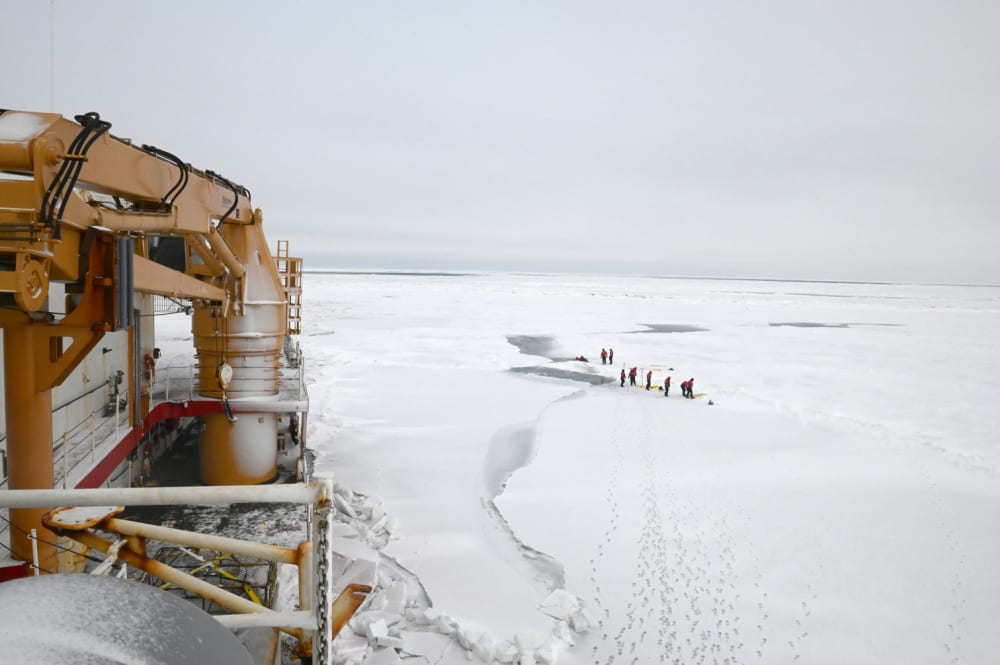
America’s only heavy icebreaker is conducting training in a realistic environment — the Arctic.
When the National Science Foundation scaled back the research activities at McMurdo Station in Antarctica because of COVID 19, USCGC Polar Star’s annual deployment in support of Operation Deep Freeze was put on ice. To maintain crew skills in icebreaking and polar operations, the Polar Star’s crew was presented a unique opportunity to get some realistic training.
“When 44-year-old Cutter Polar Star’s annual trip to resupply McMurdo Station in Antarctica was cancelled this year by the National Science Foundation, and Cutter Healy, which typically heads North experienced a major engineering casualty — a main propulsion generator catastrophic failure — we saw an opportunity to send Polar Star to the Bering Sea and North,” said Commandant of the Coast Guard Adm. Karl Schultz, speaking at the Surface Navy Association Annual Symposium last month.
The Coast Guard has another polar icebreaker, the 399-foot, 13,000-ton Polar Sea (WAGB 10), but it is not operational. The 420-foot, 16,000-ton medium icebreaker USCGC Healy (WAGB 20) suffered a fire about 60 nautical miles from Seward, Alaska, in August of last year on her way to the high north, and is currently undergoing major repairs to replace her propulsion motor.
Schultz said a replacement polar icebreaker is a priority. The Polar Security Cutter (PSC) program, which currently has one 460-foot, 23,000-ton multi-mission PSCs on order with options for two more, is so important.
“We need a minimum of six icebreakers. Within that six, three need to be heavy, or Polar Security Cutters. And we need one now,” Schultz said at the symposium.
But with Healy undergoing repairs, and the first PCS not expected to be delivered until 2024, it’s important to keep the services icebreaking knowledge, expertise and experience. Polar operations are more challenging, especially in winter darkness, and the Antarctic and Arctic environments are not the same. When the new cutters come on line, they will need qualified crews.
“We need to train more cuttermen to break ice,” Schultz said.
Schultz said there’s no better place to learn about Arctic operations that the Arctic.
“On Christmas Day, Polar Star set a cutter record, traveling North of the 72-degree, 11-minute North latitude line in Chukchi Sea, breaking four-feet thick ice along the way. Aboard Polar Star, there are University of Washington scientists, British sailors from the Royal Navy, midshipmen from the U.S. Merchant Marine Academy, and Ice Pilots from Cutter Healy — another example of partnerships. This is Polar Star’s first Arctic winter deployment since 1982 … presence equals influence in the high latitudes.”
- A Day to Remember - September 11, 2023
- Indo-Pacific Maritime Security Exchange will examine emerging capabilities and capacity - July 12, 2023
- Cold Waters Spark Warm Relationship - April 20, 2023






